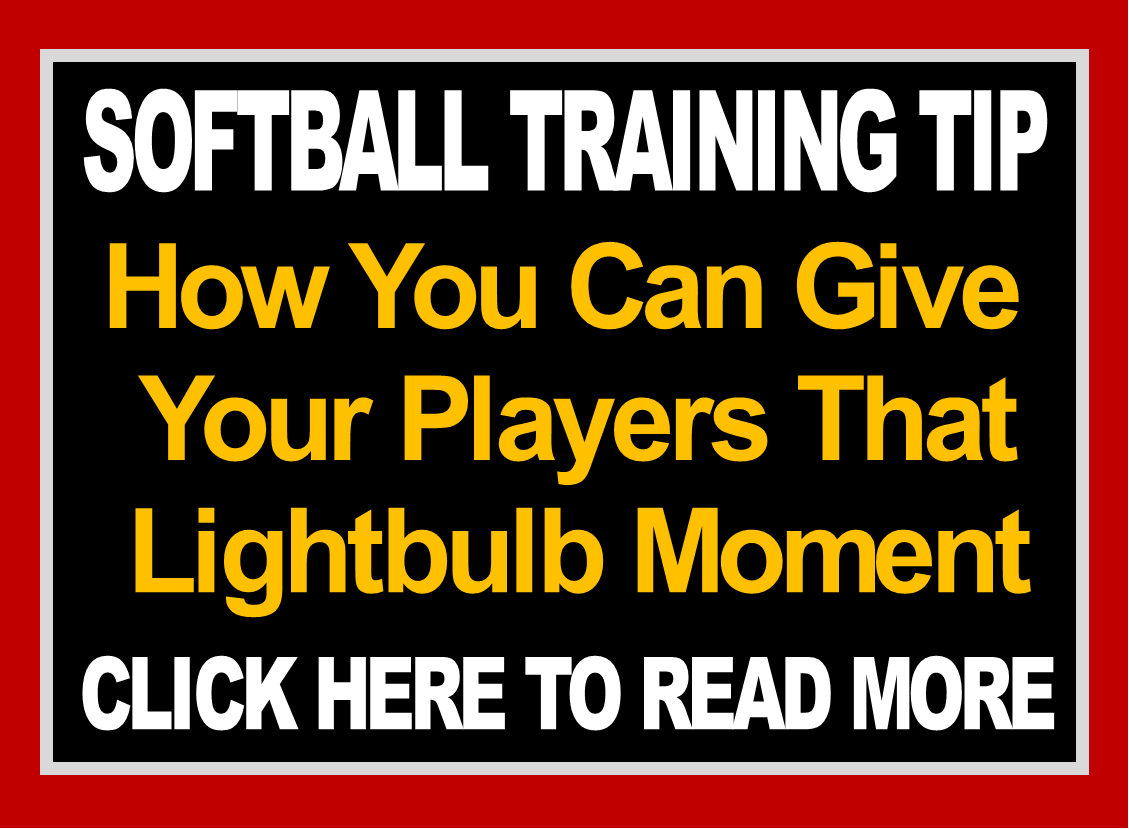
05 Dec How You Can Give Your Players That Lightbulb Moment
Coaching is all about helping our players get better and very often that includes a lightbulb moment – that one point in time when the player actually “gets it”.
Discover an innovative and often quick way to help players have their lightbulb moment.
Coaching is a challenge – for sure. And there’s nothing more challenging than that one player who tries hard, wants it bad, but just can’t “get it”. You’re both trying your guts out – you’ve explained things a million times, said it as many different ways as you can think of and in spite of how hard your player works for it she still can’t make it happen.
If this sounds familiar then you might find help “turning on the lightbulb” by switching skills away from the one that frustrates your player and go to one she can do pretty well.
Yesterday, I was working with a pitcher who hits and pitches. When she hits she’s powerful, fast, aggressive and operating in the top realm of her skill. When she pitches, she’s weak, slower, careful and operating near the bottom of her skill. And yet in both skills she’s trying her guts out and wants it really bad.
This is a VERY common difference with pitchers – we’ve micro-taught them to such a degree that they micro-pitch, and the result is a piecemeal pitcher who tries to make every single part perfect instead of trying to pitch the crap out of the ball. And yet when she hits, she only thinks about hitting the crap out of the ball (her words). And not surprisingly, she does!
So her comfy place is her hitting and her “struggling” place is her pitching. To help players cross over from struggling to comfy, or from “I can’t get it” to Lightbulb Moment try to drag the comfy skill into the struggle skill.
Here’s a look at how I did that with this particular pitcher. Since we were doing a bullpen workout she didn’t actually have her bat with her, but I asked her to stand there and swing. Of course she asks me “what do you mean” since you don’t swing when you’re pitching so her brain wasn’t sure what to do with what I was asking her to do. I explained that we wanted to take all that comfort and power and speed she feels in her swing and bring it over into her pitching. Her eyes lit up even though neither of us were sure just how it would go.

Keep in mind this player pitches Right handed but hits Left handed, so it was going to be a little weirder going from one to the other but it was definitely worth the try. It was important to let her know we didn’t care where the ball went since that wasn’t what we were focusing on with this effort.
- I asked the pitcher to get into her hitting stance in her loaded position – or her what felt like she was “ready to go” (picture 1). We were focusing on how quickly she feels she can go from her load to mashing the ball with her bat – that she Quickly creates Power and Aggressiveness when she hits.
So we were trying to imitate this in her pitching since she’s slower and less powerful in her pitching.

- Whenever she felt ready, I told her to feel like she was starting her swing but to actually pitch the ball. (Picture 2)
- She immediately started throwing faster and more powerful as she transferred her hitting self into her pitching. Pictures 3 – 4 show how quickly she was able to go from her almost-hitting start into a more powerful pitching start.
I’m not suggesting that pitchers start their motion like this in a game. What I AM saying is that our responsibility as coaches is to help players make connections from information to performance, and the more we can infuse a confident skill into a struggling one the more likely our player will be to “get it” and start carrying over that transfer into competition.

This same player has a very specific routine when she hits:
- She waggles the bat with 1 hand while bouncing on her feet – with NO thoughts in her head
- She then puts both hands on the bat & settles down her feet – but purposefully clears her head of thoughts
- She loads when the pitcher puts both hands on the ball – she thinks SMASH!
So we carried that purposeful yet simple routine into her Pitching start and it made a HUGE difference.
Help your players carryover any skill they do well into their struggle skill whether it’s overhand, hitting, running, catching, or fielding – help them feel what they do well and carry that feeling into the skill where they don’t feel as confident.
Transport your players into a different skill and see if you can help them turn on that lightbulb!



